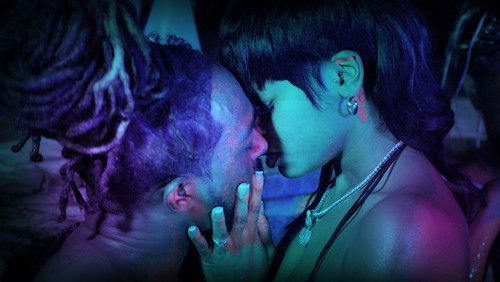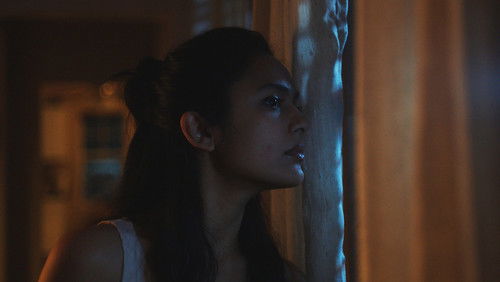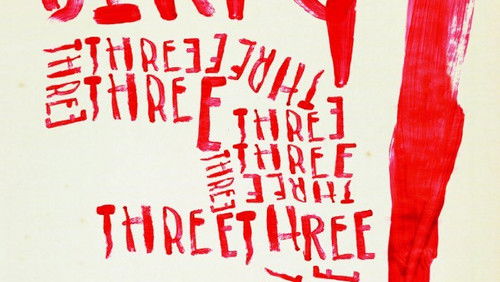Shree 420 (1955)
48KShree 420 (1955). 2h 48m
“Raj Kapooru0026#39;s social dramedy u0026quot;Shree 420u0026quot; is a real classic gem. I have rarely seen a film that is as entertaining, inspiring, eye-opening, and affecting all at the same time, as this one. Kapooru0026#39;s character represents the common man who is lost in a world dominated by the rich and famous. This role, in an amazingly dizzy combination of comedy and drama, is unforgettable. He is sad, he is lonely, he does not know what the future plans for him, so he just prefers to forget it all, be cynical and laugh about his misery. He falls in love with a beautiful young woman called Vidya and wants to succeed on his own moral terms, but itu0026#39;s just impossible in a society so indifferent to human lives. After being introduced to the world of gamblers by a vulgar dancer named Maya where he can use his talent for card manipulation, he is aided by his tremendous skills to become part of exactly this corrupted society. When he wants to come back, itu0026#39;s perhaps too late. Such was the lot for simple people of that time.u003cbr/u003eu003cbr/u003eJust like Kapooru0026#39;s previous gem Awaara, Shree 420 brings together several genres, navigating between socio-realist drama, musical romance, and slapstick comedy, to explore themes of poverty, social classes, nationalism, multi-culturalism, dreams of socio-economic mobility in a world of opportunity, and urban loneliness in a city where modernity took over so much that everyone mind their own thing without minimal awareness of their surroundings. Clearly reflective of the early post-independence days in India, particularly in view of Nehruvian secular state socialism, the film manages to present the pros and cons of both capitalist and socialist economies, or the mix of the two, even though the direction in which hope for a better future lies in the eyes of the writer couldnu0026#39;t be clearer. Even though few rich people are shown to be kind – not money is the problem – elitism is. The film is above all a human, moral commentary on the many hypocrisies that underlie and sometimes govern life in developed societies, and it knows no country or time, as itu0026#39;s relevant always and everywhere.u003cbr/u003eu003cbr/u003eKapoor conveys the irony of the big city very well. Street beggars appear to have more knowledge in life than the so-called elite people; people sell more than they buy in order to survive the next couple of days, even if it means they have to cede their most precious assets; street dwellers feel they own these very streets just because thatu0026#39;s where they sleep, and everyone is in search of money, because money runs the world. Thatu0026#39;s where Raj is thrown. He desperately needs money but he canu0026#39;t find a job despite his academic degree. This forces him to basically compromise his core values. But in doing so, you are a swindler and get branded u0026quot;420u0026quot; by the so-called reputable citizens, most of whom are mere phonies and are the real thieves of society, who try to turn the poor people into scapegoats so that they can hide their own crimes. The writing, by and large, courtesy the legendary Khwaja Ahmad Abbas, is stupendous, with deep, meaningful dialogue wavering between some welcome humour, casual everydayness, and often just sheer poetry.u003cbr/u003eu003cbr/u003eThe portrayal of life in urban Bombay of the 50s is admirably realistic and might catch many foreigners by surprise. Indeed, such life existed in India as well, for those ignorant of the diverse ways and cultures of this phenomenal country. Technically, the film is ahead of its times and it boasts of high production values. The costuming, sets, and the overall production design, are all excellent. The movie is just all style, while also being a slice-of-life glimpse into a place that feels so removed yet so familiar. The setting, ranging from crowded market centers or densely populated streets where the homeless stay, to shopping districts and empty rain-wet avenues, to the luxurious hotels and casinos, is spot on; and the camera work secures a true visual treat. Even a small antique shop, a portion of Chowpatty beach at the coast of the city, a small house or a tea stall, are wonderfully presented. The black-and-white cinematography is, indeed, a true asset in this film, as it enhances the narrative and gives tremendous importance to the characters and their situation.u003cbr/u003eu003cbr/u003eKapoor makes a fantastic job in terms of acting and directing. As a director, his attention to detail helps the story receive the credibility it requires. As an actor, he delivers a terrific performance, capturing both the famous Chaplinesque persona but also the person beneath it. His comic timing is top-notch, his pain is well evident, and he makes his characteru0026#39;s transformation from a simpleton to a sophisticated gambler cum serious and unhappy businessman brilliantly. Nargis, as his beloved Vidya, is just splendid. She is presented as the epitome of Indian female goodness, inner beauty, and purity. A superb actress by every possible standard of judgement, she is incredibly graceful, natural and believable. Note the scene when Vidya visits the casino along with Raj and is publicly humiliated by Nadirau0026#39;s Maya. She starts crying quietly and ashamedly, while Raj is looking at her, unable to say a word. Itu0026#39;s a wonderful scene, brilliantly acted and executed. It goes without saying that Kapoor and Nargis had the most powerful on-screen chemistry of their time.u003cbr/u003eu003cbr/u003eThe cast includes a host of great character actors enacting their parts with conviction. The glorious Lalita Pawar stands out as Gangamai, a lovable woman who is a mother figure to the entire street and to Raj in particular. Pawar exudes a warmth that makes it easy to understand why she is so loved by the people in the movie, and her interaction with Raj is very well portrayed. This is one of the famous roles of Nadira, and she really does a good job as Maya, the polar opposite of Vidya (also in their symbolic names). Her vicious expressions, sharp line delivery and the way she stylishly smoke her cigarettes in a holder, created the ultimate vamp of the times, reminiscent of some of the characters played by Bette Davis. Nemo is also very well cast as Sonachand Dharmanand, a sort of comic villain. Hari Shivdasani is excellent as Vidyau0026#39;s kindhearted father. Shree 420 is generally tremendously well-acted by one and all. Even the tiniest minuscule characters appear natural and authentic, and some of them, such as the seller or the street beggar, are totally memorable.u003cbr/u003eu003cbr/u003eAnd if all that wasnu0026#39;t enough, the film has among the most beautiful soundtracks of Indian cinema. Composed by Shankar-Jaikishan, it is considered to be an all-time classic, and rightfully so. Apart from the movieu0026#39;s signature song u0026quot;Mere Joota Hai Japaniu0026quot;, my favourite numbers are u0026quot;Pyar Hua Ikrar Huau0026quot; and u0026quot;Ramaiya Vastavaiyau0026quot; which are not only melodious and memorable but also very beautifully pictured in the film, efficiently representing the contradictory moods and states of mind of the lead pair. The former shows their dreams and hopes of forming a happy family life together, and the latter presents their sadness and loneliness on parted ways, while in the backdrop the street people are singing and dancing, still holding hope for a better day. I cannot forget the heartbreaking moment showing Nargisu0026#39;s Vidya sitting serenely and teary-eyed on her homeu0026#39;s pavement, softly singing the poignant lines of the song. At the same time it shows Kapooru0026#39;s pain of losing his own self upon watching his old friends, yearning to come back to his previous, poor but happy life.u003cbr/u003eu003cbr/u003eThat was Kapooru0026#39;s way of perceiving the art of cinema and life in general, I believe. Through this movie and his character he shows us that laughing at yourself, making fun of common social diseases, switching masks from sad to happy and vice versa and sometimes even standing on your head in order to see this crazy world from a clearer perspective, is the best way to go. This is one of the aspects that make this film so thoroughly fascinating and entertaining, and apart from its socially relevant message, which feels fresh even today, it has a wide range of emotions and memorable moments which make it the heart-touching classic that it is. The ending is fantastic, ultimately showing us that it actually is possible to live a decent life and not lose yourself, and more than anything, change the world. u0026quot;Shree 420u0026quot; has it all, superb comedy, powerful drama, a strong social message, charming romance, great music. It is full of hope, love and optimism, and can be easily described as not only one of Raj Kapooru0026#39;s best, but also one of Indian cinemau0026#39;s finest. Classic, world-class cinema, indeed.”









